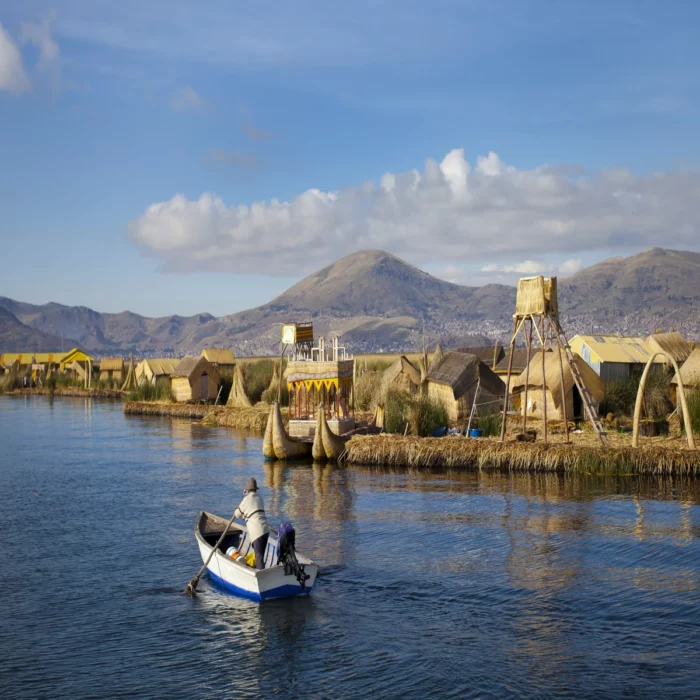A Tourist's Guide to the Most Important Landmarks in Peru
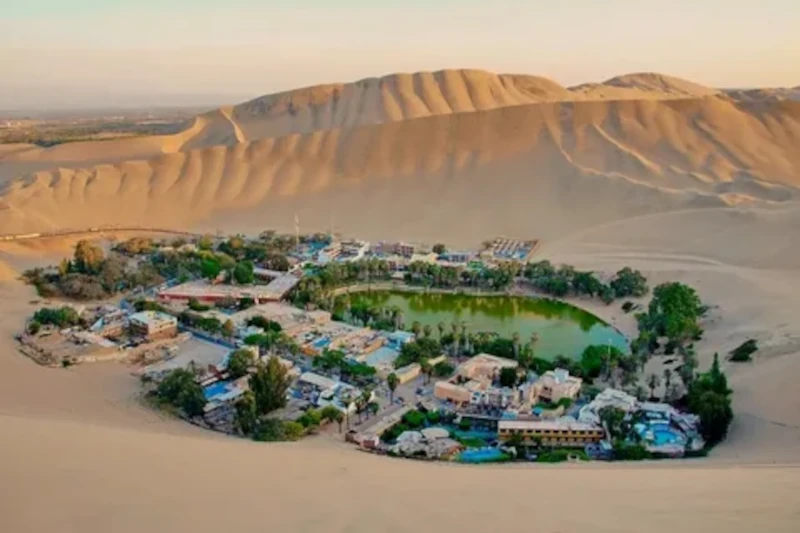
Peru is a country rich in history, culture, and natural wonders. Its landmarks reflect centuries of tradition and heritage. From ancient ruins to vibrant cities, each of the important landmarks in Peru are unique experience.
Travelers will discover a land filled with breathtaking landscapes and awe-inspiring monuments. These places are culturally important. Whether you love history or nature, Peru has something for everyone.
This guide will explore Peru’s key landmarks. Each place highlights Peru’s rich history and vibrant present. Get ready to see the highlights of this amazing destination. Don’t miss the Nazca Lines, Paracas National Reserve, Chan Chan, and the sand dunes.
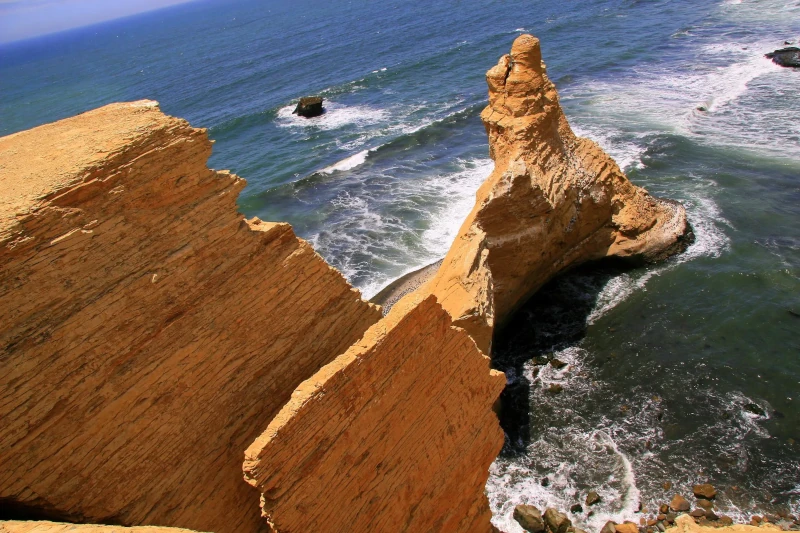
Machu Picchu: Peru’s Iconic Inca Citadel
Machu Picchu is undoubtedly one of the most important landmarks in Peru and a must-visit destination. This ancient Inca citadel, high in the Andes, attracts travelers from around the world. As a UNESCO World Heritage Site, it showcases Peru’s rich cultural and historical significance.
Set at an altitude of 2,430 meters, Machu Picchu offers breathtaking views of the surrounding mountains and cloud forests. The site’s remarkable stone structures, terraces, and temples demonstrate the architectural mastery of the Inca civilization. As you explore, you’ll witness how the Incas harmoniously integrated their constructions with the natural landscape.
Hiking the Inca Trail to Machu Picchu is a once-in-a-lifetime experience for adventure seekers. This ancient route takes you through diverse ecosystems, from cloud forests to alpine tundra. The journey culminates with the awe-inspiring sight of Machu Picchu as it emerges through the morning mist.
Many travelers also choose to visit Machu Picchu via a scenic train ride from Cusco or Ollantaytambo. The train route follows the winding Urubamba River, offering stunning views of the Sacred Valley. Whether by foot or train, arriving at these important landmarks in Peru are a truly amazing experience.
The History and Significance of Machu Picchu
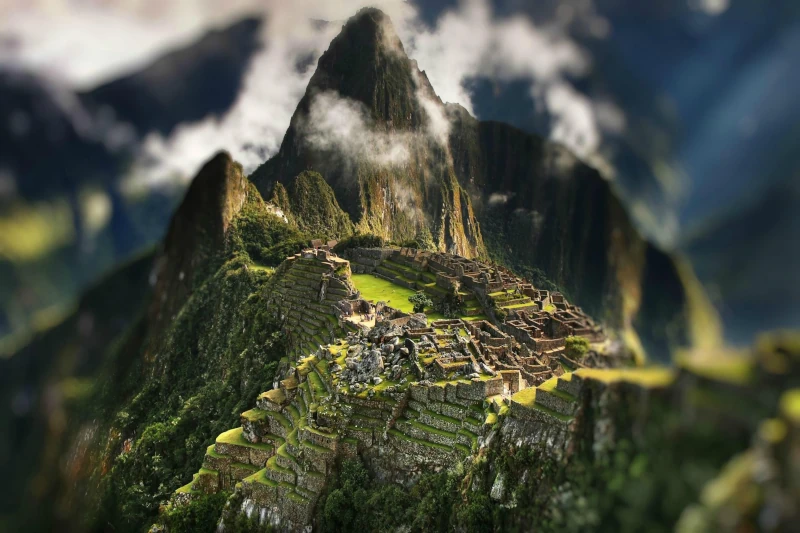
Machu Picchu is believed to have been built in the 15th century during the reign of Inca emperor Pachacuti. Historians suggest it served as a royal estate or religious site for the Inca elite. Despite its grandeur, it remained hidden from the outside world until American explorer Hiram Bingham rediscovered it in 1911.
Since its rediscovery, Machu Picchu has become one of the most important archaeological sites in South America. The site’s preservation and global recognition make it an essential part of Peru’s cultural heritage. Visiting this iconic landmark offers insight into the advanced engineering and spiritual practices of the Inca civilization.
While exploring the ruins, visitors can see important structures like the Temple of the Sun and the Intihuatana Stone. The Temple of the Sun was for astronomy and ceremonies, and the Intihuatana Stone was a solar clock.
Machu Picchu’s location on a mountain ridge let the Incas watch their surroundings while staying close to nature. The complex network of terraces helped prevent landslides and provided space for farming. These engineering feats further establish Machu Picchu as one of the most important landmarks in Peru.
Best Time to Visit Machu Picchu .The best time to visit Machu Picchu depends on whether you prefer fewer crowds or clear weather. The dry season, from May to September, offers sunny days and excellent hiking conditions. However, the site can be busy during these months due to its popularity.
The rainy season, from November to March, brings fewer visitors but also wetter conditions. Some travelers prefer the solitude of this season, as the lush green landscape adds to the site’s beauty. Regardless of when you visit, Machu Picchu promises to be an unforgettable highlight of your trip to Peru.
In conclusion, Machu Picchu stands out as one of the most important landmarks in Peru and South America. Its combination of historical significance, architectural brilliance, and natural beauty makes it a must-see destination. Whether you hike the Inca Trail or take the train, visiting this remarkable site will leave you with lifelong memories.
Cusco: The Historic Heart of the Inca Empire
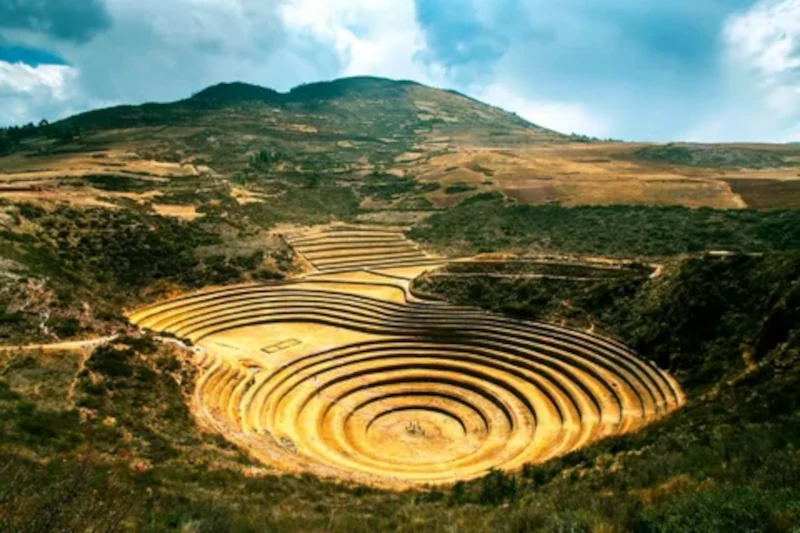
Cusco, once the capital of the Inca Empire, remains one of the most important landmarks in Peru. Located in the heart of the Andes, it is a city steeped in history and culture. As you explore its cobblestone streets, you’ll discover a unique blend of Inca and Spanish colonial architecture.
The city of Cusco is a UNESCO World Heritage Site, recognized for its historical and cultural significance. It serves as a gateway to many other important landmarks in Peru, including Machu Picchu and the Sacred Valley. Travelers flock to Cusco not only for its beauty but also for its deep connection to Peru’s past.
Walking through the city, you’ll encounter the famous Plaza de Armas, Cusco’s vibrant main square. Surrounded by colonial buildings and churches, the Plaza de Armas is a lively center. The grand Cusco Cathedral and the Church of La Compañía de Jesús stand out, showing Spanish architectural influence.
Visitors can also explore Sacsayhuamán, a massive Inca fortress that overlooks Cusco. This archaeological site features immense stone walls, some of which weigh several tons. The precision with which the Incas built Sacsayhuamán remains one of the most impressive feats of ancient engineering.
Cusco’s Role as the Capital of the Inca Empire
Cusco’s history goes back over 3,000 years, making it one of South America’s oldest cities still inhabited. As the capital of the Inca Empire, Cusco was the center of politics and religion for this great civilization. The Incas believed it was the “navel of the world,” and their rulers called it home.
At the height of the Inca Empire, Cusco was a bustling city with temples, palaces, and homes for nobles. Many of these structures, including the Qorikancha, or Temple of the Sun, still stand today. The Qorikancha once dazzled with gold, serving as the most sacred temple in Inca society.
Though the Spanish conquest changed the city, many Inca foundations are still visible. The Spanish built colonial buildings on top of Inca walls, creating a unique style blend. You can see this blend throughout Cusco, making it a must-visit for anyone exploring Peru’s landmarks.
Exploring Cusco’s Museums and Markets
Cusco is also home to several museums that showcase its rich history and culture. The Museo Inka offers a comprehensive look at Inca artifacts, including pottery, textiles, and gold jewelry. For those interested in art, the Museo de Arte Precolombino houses pre-Columbian masterpieces from across Peru.
To experience the vibrant local culture, visitors can explore Cusco’s bustling markets. San Pedro Market is a popular spot for fresh produce, local crafts, and traditional Andean clothing. It’s a great place to pick up souvenirs and immerse yourself in the daily life of Cusco.
Cusco’s location also makes it an ideal base for exploring other important landmarks in Peru. From here, travelers can visit nearby destinations like the Sacred Valley, Huascaran National Park, and the famed Colca Canyon. Each of these locations offers a unique glimpse into Peru’s diverse landscapes and ancient heritage.
In conclusion, Cusco remains a vital destination for anyone interested in the history and culture of the Inca Empire. As a major landmark in Peru, Cusco blends ancient and colonial architecture. Whether you explore its streets, visit museums, or use it as a base, Cusco is a must-see on any Peruvian trip.
The Sacred Valley: A Journey Through Ancient Ruins and Villages
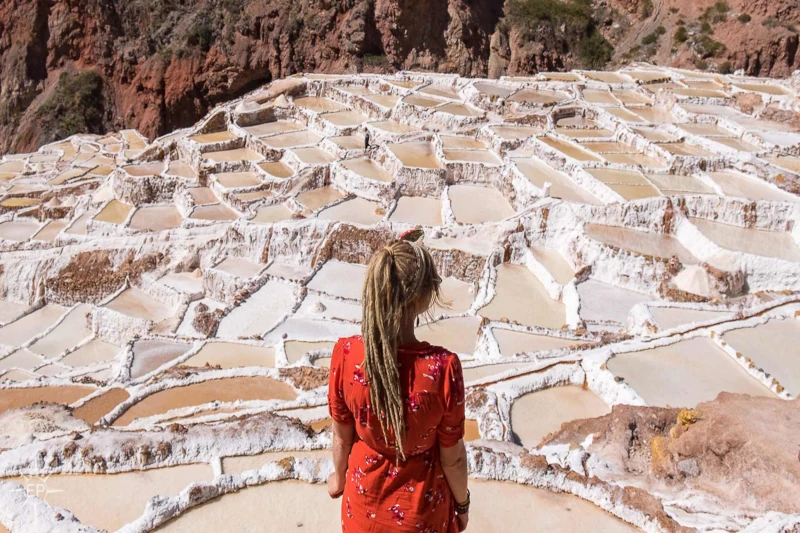
The Sacred Valley, near Cusco, is a key landmark in Peru with many ancient ruins and traditional villages. This fertile valley was once the heart of the Inca Empire, vital for agriculture and spiritual practices. Today, it offers travelers a unique journey through history, with its blend of natural beauty and cultural heritage.
The Sacred Valley stretches along the Urubamba River, surrounded by towering mountains and picturesque landscapes. Here, visitors can explore some of the most impressive Inca archaeological sites, such as Pisac, Ollantaytambo, and Moray. These ruins highlight the advanced engineering and architectural skills of the Inca civilization.
Pisac is often one of the first stops for travelers in the Sacred Valley. It features large ruins and a lively market with handmade crafts and traditional textiles. The ruins, including terraces and ceremonial structures, sit high above the town with great valley views.
Ollantaytambo gives a glimpse into Inca city planning. This ancient town was both a fortress and a religious center. Its large stone terraces and water channels show the Incas’ advanced resource management.
Moray and the Maras Salt Mines
Beyond the famous ruins, the Sacred Valley also boasts fascinating agricultural innovations.Moray, a circular terraced ruin, was likely an Inca agricultural lab. The Incas used these terraces to test crops and create different growing conditions.
Nearby, the Maras Salt Mines offer a glimpse into a centuries-old salt extraction method still in use today. Thousands of salt pools cascade down the hillside, producing salt through evaporation. This unique site, along with Moray, highlights the ingenuity of the Inca people in adapting to their environment.
Exploring the Sacred Valley also allows visitors to experience the region’s living culture. The valley is home to many traditional Andean villages, where indigenous communities maintain their customs and crafts. Villages like Chinchero and Yucay offer opportunities to learn about textile weaving, a tradition passed down through generations.
The Sacred Valley is not just ruins; it’s a lively place where ancient traditions mix with daily life. The mountains, rivers, and fertile land still support the local people, as they did in Inca times. Visiting these villages allows travelers to connect with Peru’s living heritage.
A Base for Adventure in the important landmarks in Peru
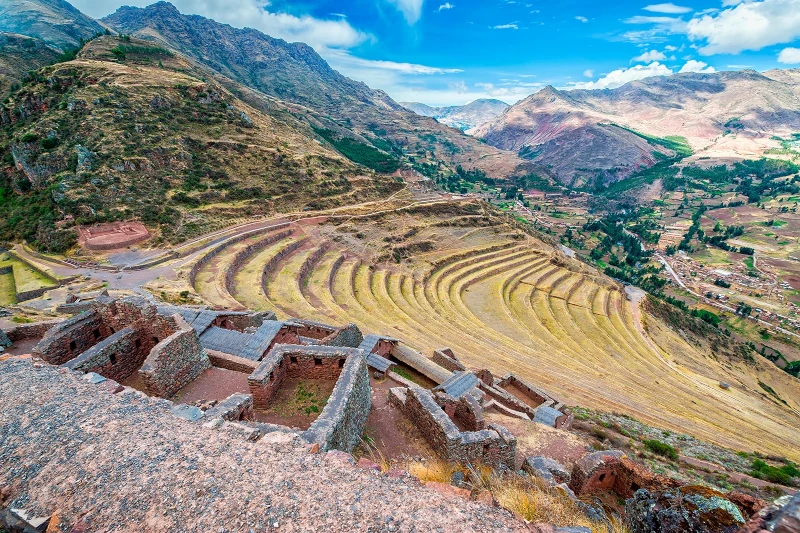
The Sacred Valley is also a perfect base for travelers looking to explore other important landmarks in Peru. Its closeness to Cusco and Machu Picchu makes it a perfect stop for visiting multiple Inca sites. Many tours of the region also include opportunities for outdoor activities like hiking, mountain biking, and rafting.
The Sacred Valley is top important landmark in Peru, with ancient ruins and traditional villages to explore. Its mix of history, culture, and natural beauty makes it a must-visit for anyone exploring Peru. As you travel through the valley, you’ll see how the Inca legacy still shapes the region today.
Lake Titicaca: The Highest Navigable Lake in the World
Lake Titicaca is a major landmark in Peru and the highest navigable lake in the world. Located at an altitude of 3,812 meters, this vast lake straddles the border between Peru and Bolivia. It holds great significance for both the Inca civilization and modern-day indigenous communities.
The lake’s calm beauty matches its cultural importance. Myths say Lake Titicaca is where the Inca civilization began and the first Inca ruler emerged. As you explore, you’ll see rich traditions, stunning landscapes, and unique islands that reveal Peru’s heritage.
A main attraction on Lake Titicaca is the Uros Floating Islands. The Uros people build their islands from totora reeds in shallow waters. They have lived there for centuries and still use the reeds for their homes and boats.
Another must-see destination on Lake Titicaca is Taquile Island, known for its vibrant textile traditions. The island’s inhabitants are world-renowned for their handwoven garments, particularly their intricate hats and belts. Visitors can tour the island, meet the artisans, and even purchase these high-quality handmade products.
The Cultural Heritage of Lake Titicaca
Lake Titicaca is a natural wonder and an important cultural site for the Quechua and Aymara people. These communities have lived by the lake for thousands of years, keeping their languages, traditions, and festivals alive. Many villages along the lake’s shores offer homestays, allowing travelers to experience local life firsthand.
The ancient ruins of Pukara, near the lake’s northern shores, offer a look into pre-Inca cultures of the area. This archaeological site features pyramids, stone carvings, and ceremonial spaces used for religious rituals. These ruins highlight the long history of human settlement around one of the most important landmarks in Peru.
Lake Titicaca has a rich ecosystem. Birdwatchers can see flamingos and Andean condors flying over the lake. The lake also has rare fish, like the Titicaca Orestias, found only here.
Adventure and Exploration Around Lake Titicaca
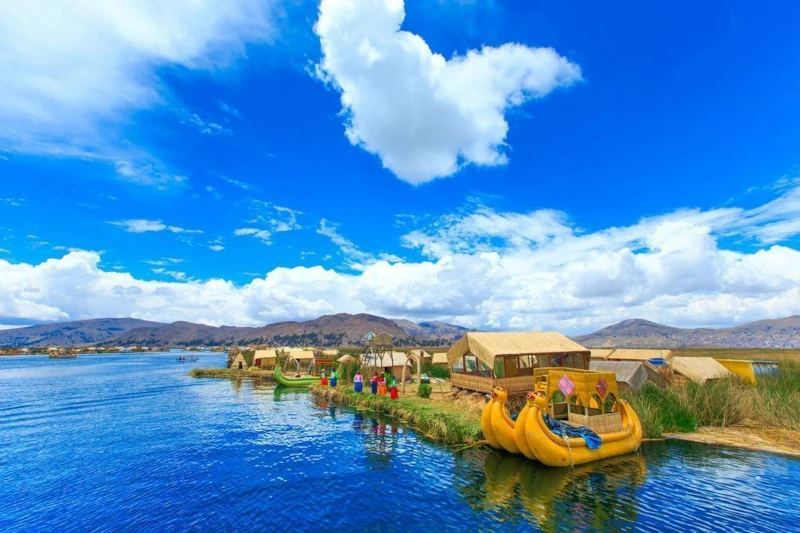
Beyond its cultural and ecological importance, Lake Titicaca offers a range of outdoor activities for adventure seekers. Travelers can explore the lake by boat, kayak, or sail, taking in its expansive views and stunning sunsets. The surrounding landscape, with its rolling hills and distant mountains, provides excellent opportunities for hiking.
Puno, the main Peruvian city on the lake’s shores, serves as a hub for those visiting Lake Titicaca. From here, travelers can book tours to the floating islands, Taquile, and nearby archaeological sites. The city is also worth visiting for its lively festivals and historic sites, like the San Francisco Church.
For more adventure, start at Lake Titicaca and visit top spots like Huascarán National Park and the Rainbow Mountains. Lake Titicaca provides a full Peruvian experience with its blend of culture, nature, and adventure.
In conclusion, Lake Titicaca is a key landmark in Peru, combining stunning nature with rich cultural heritage. Its high-altitude waters, floating islands, and ancient ruins make it a must-visit destination for any traveler. Whether you like history, culture, or outdoor activities, Lake Titicaca offers an unforgettable experience of Peru’s Andean traditions.

